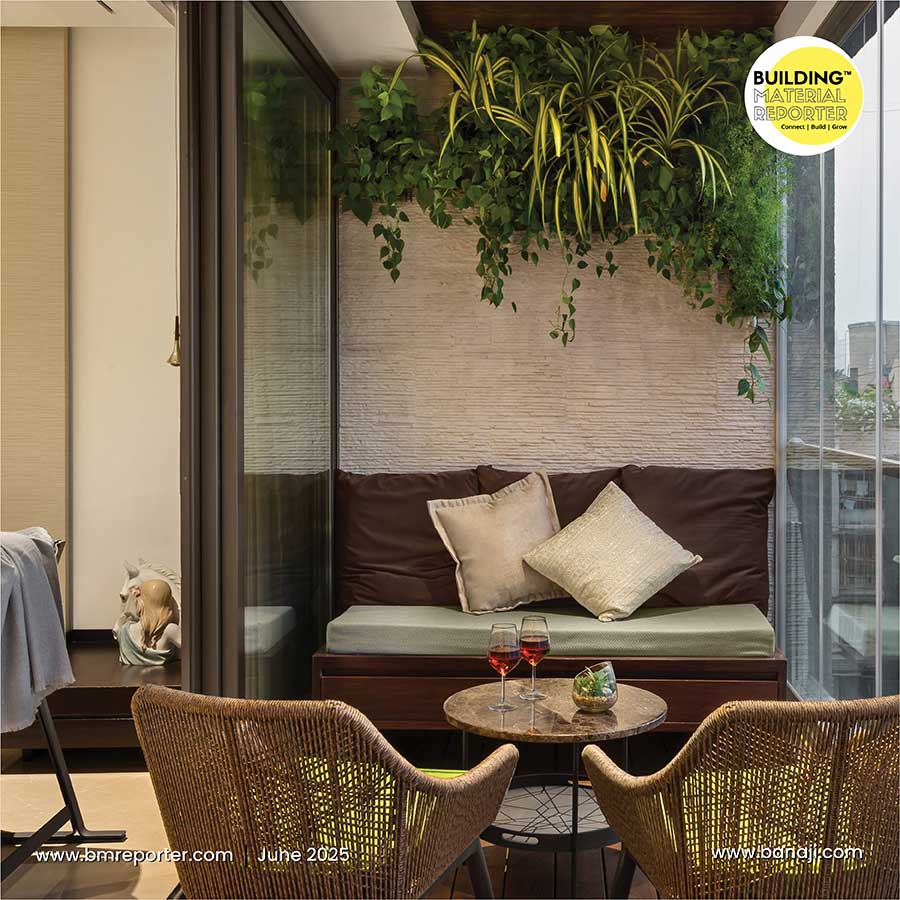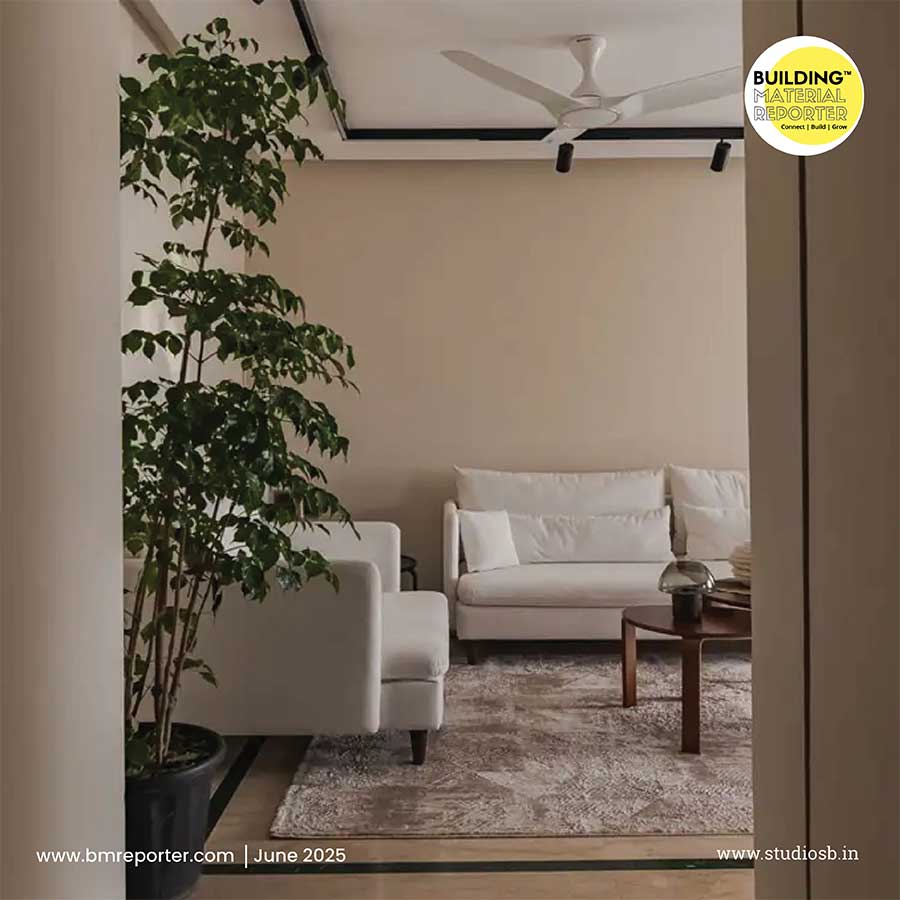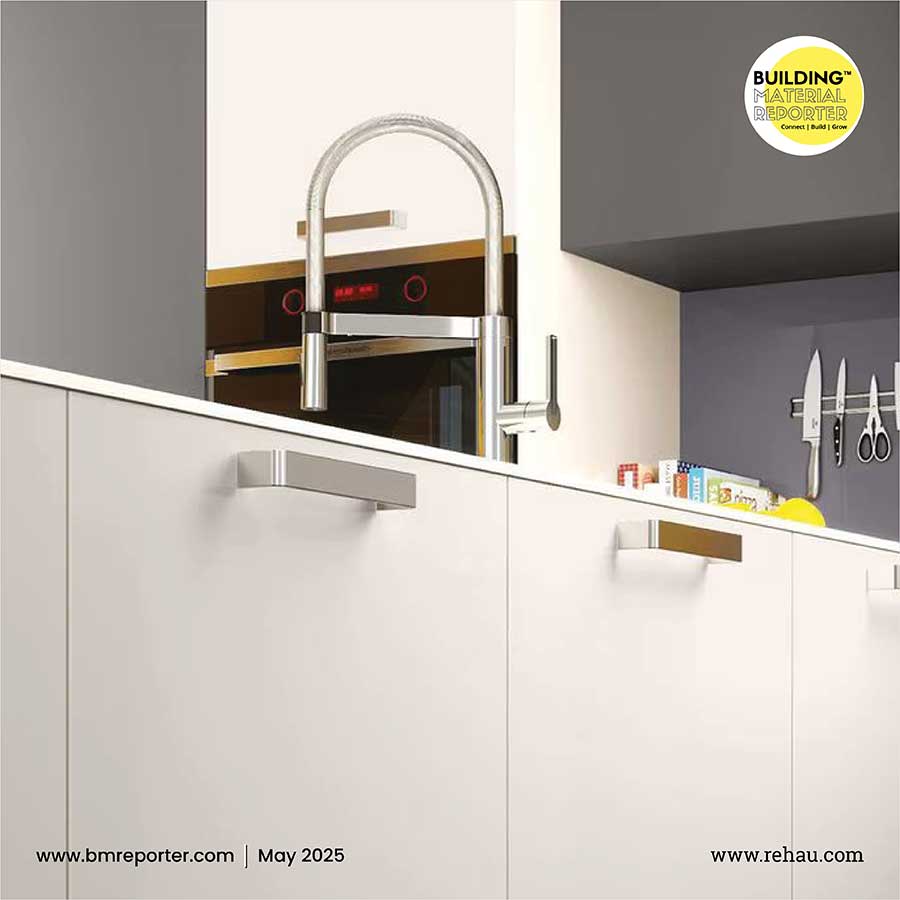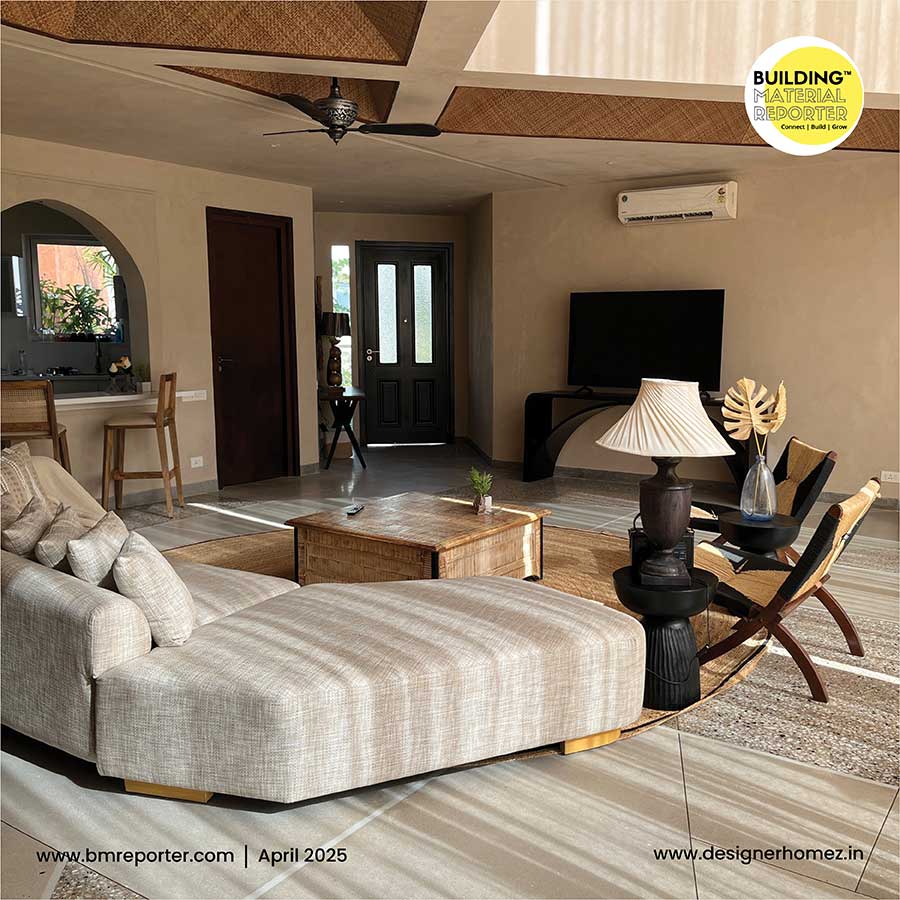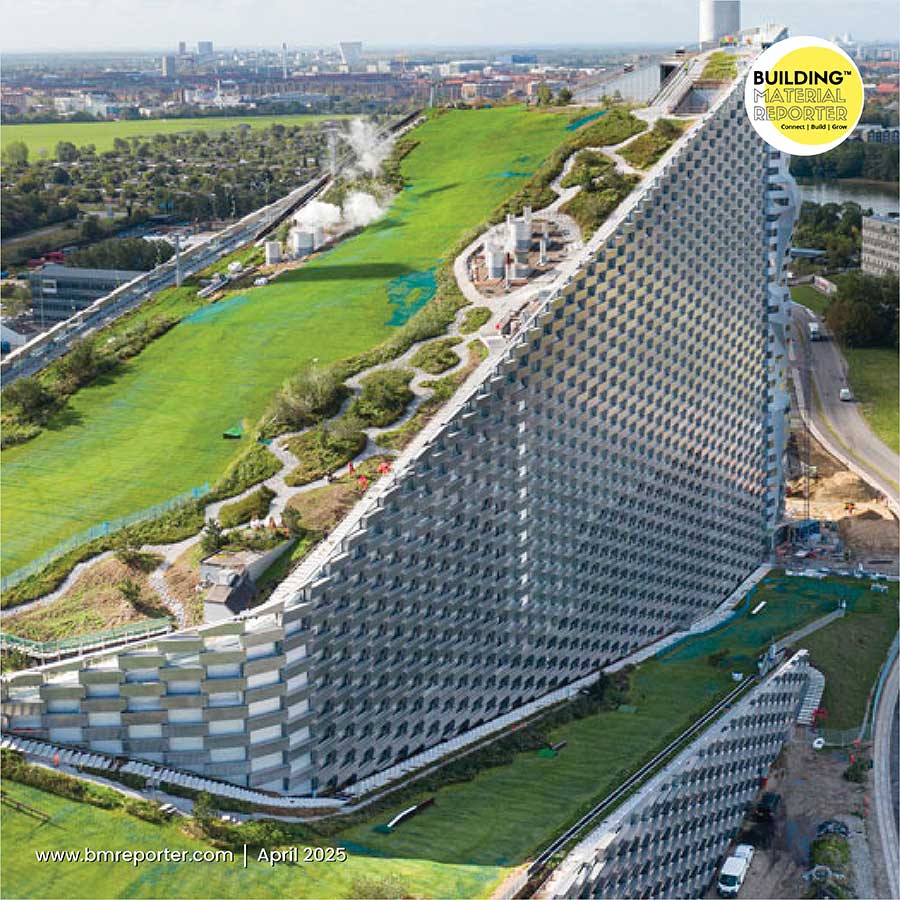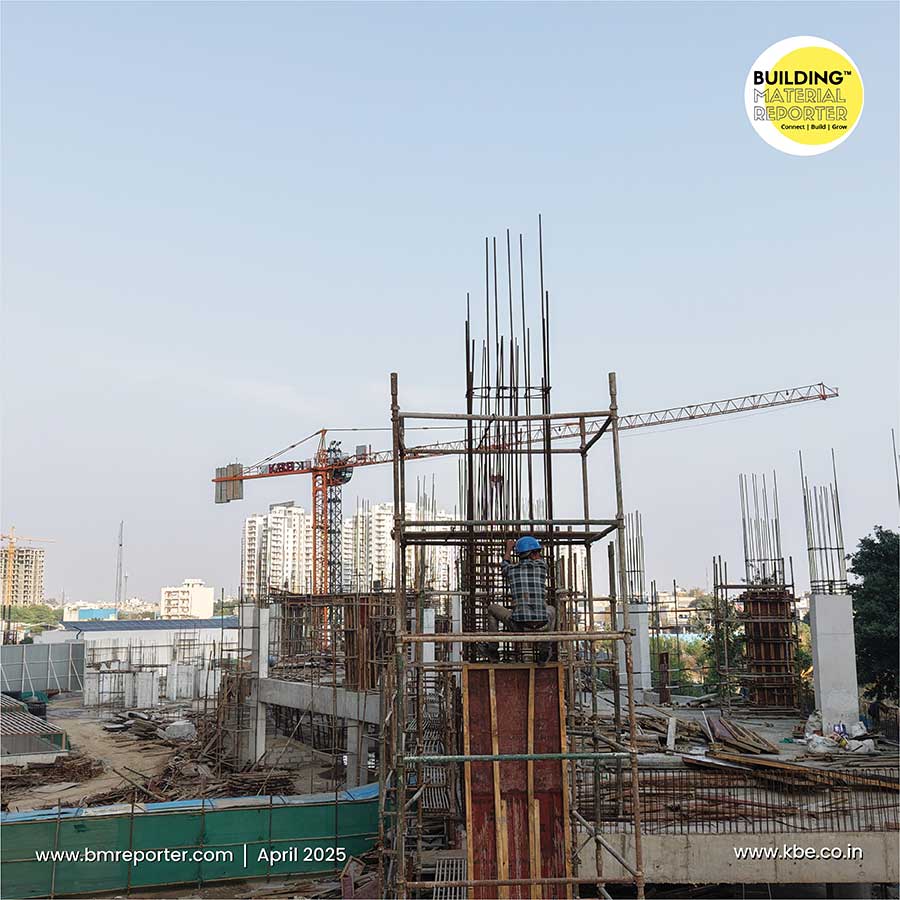Futuristic Interior Design Ideas for Smart Living Spaces
- December 26, 2024
- By: Ar. Priyanshi Shah
- INFLUENCERS
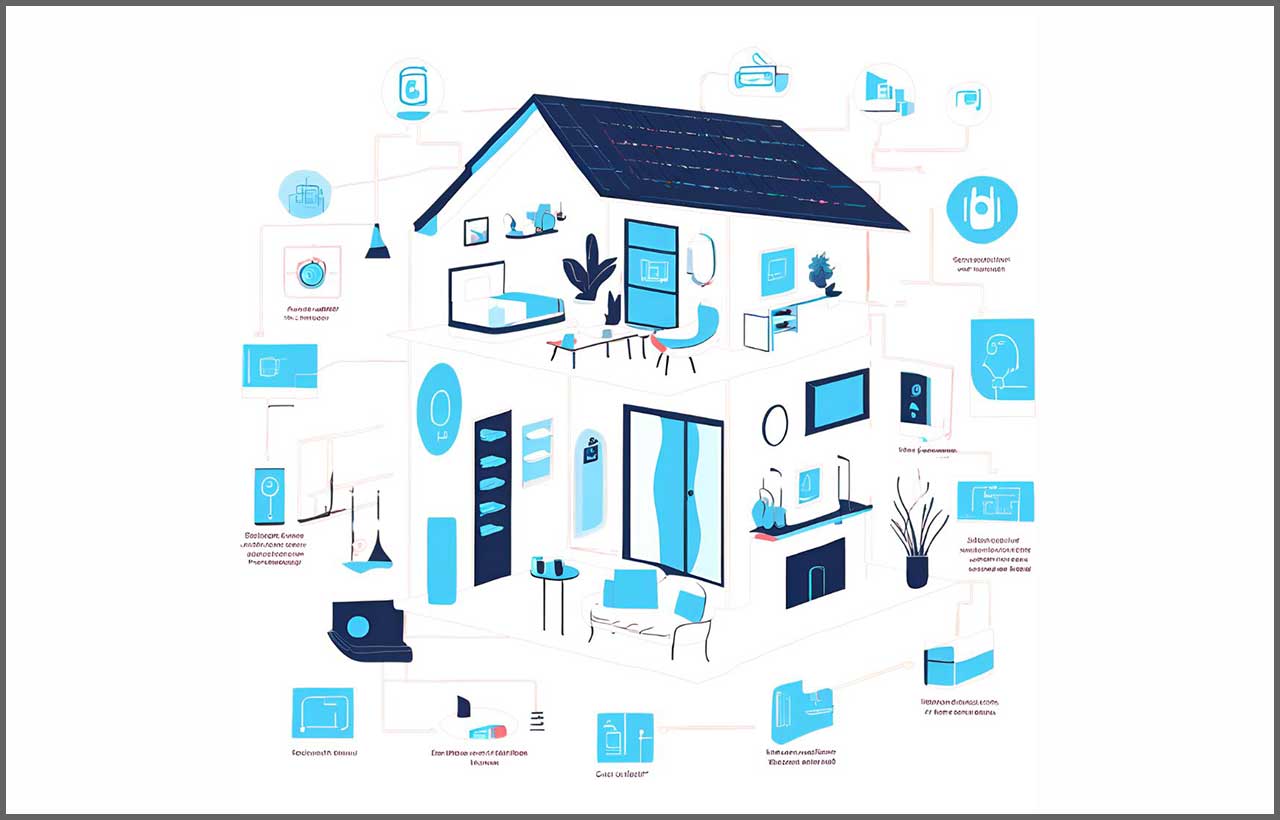 Smart living spaces are the latest addition in the design realm with the integration of innovative materials and futuristic interior design. Imagine a room, sitting with a cup of tea and reading a book and with a click on your mobile app you can control the LED lighting and digital home automation. Isn't it great to know more about such trends and the evolution of the tech world that will shape the future of interior design with creative and innovative ideas? In this Building Material Reporter article, let's explore futuristic interior design ideas, and their applications for smart living spaces.
Smart living spaces are the latest addition in the design realm with the integration of innovative materials and futuristic interior design. Imagine a room, sitting with a cup of tea and reading a book and with a click on your mobile app you can control the LED lighting and digital home automation. Isn't it great to know more about such trends and the evolution of the tech world that will shape the future of interior design with creative and innovative ideas? In this Building Material Reporter article, let's explore futuristic interior design ideas, and their applications for smart living spaces.
Embracing Futuristic Design: The idea of futuristic interior design is a new-age concept to adapt the latest trends, cutting-edge technology, and sustainable materials to enhance the user's well-being. The forward-thinking approach transforms our homes, elevates our lifestyle and helps us to coordinate with our surroundings. These spaces are not only vibrant and visually appealing but also efficient and functional.
The Rise of Smart Living Spaces: Smart living spaces combine intelligent design and functionality that offer adaptability, and eco-conscious keys that align with the theme of the home. These living spaces reflect modernity, technological advancements and the interconnected lifestyle.
Key Principles of Futuristic Interior Design
It is important to understand the key strategies of futuristic interior designing that can help designers evaluate the method and find a perfect solution for your smart living spaces.
Minimalism and Functionality: As Leonardo Vinci said “Simplicity is the ultimate sophistication”, the core of design should emphasise clean lines, bold materials, and uncluttered spaces and the multipurpose use of furniture enriches this simplicity.
Integration of Technology: To elevate smart living various features such as voice-controlled locks and smart LED lights home intelligent systems that define technological advances and the futuristic interiors.
Sustainable and Eco-Friendly Materials: The future of the interior is about eco-friendly materials such as bamboo, rammed earth, and recycled or reclaimed materials responding to the context, climate and local culture. The built form designed with sustainable approaches will benefit the environment in the future by reducing the carbon footprint, and energy consumption.
Smart Home Technologies Enhancing Interior Design
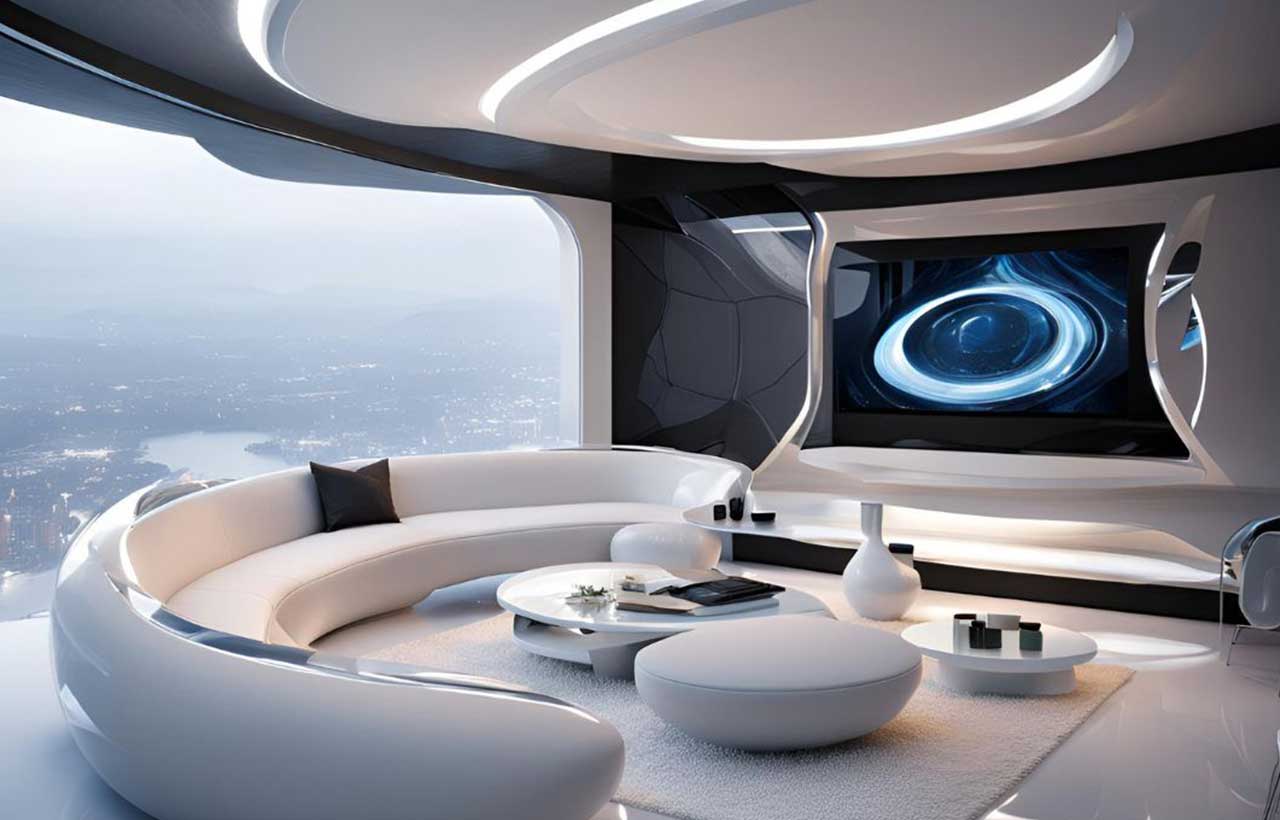 There are various Smart Home Technologies such as smart LED lighting, climate-sensitive lights, faucets, solar panels, and facades that can enhance Interior Design
There are various Smart Home Technologies such as smart LED lighting, climate-sensitive lights, faucets, solar panels, and facades that can enhance Interior Design
Automated Lighting and Climate Control: Automated smart lighting systems control the colour temperature, and adjust the brightness based on time and mood while also ensuring optimal comfort with automated climate controls.
Smart Appliances and Furniture: Smart furniture and 3D printed futuristic furniture ingrained with IoT can change the perspective of the objects, imagine a bed that tracks sleep patterns or refrigerators that make a list of inventory enhancing the user’s well-being in a busy life.
Home Automation Systems: A single device with one click can adapt, control and monitor smart living spaces making everyday tasks efficient. Safety and security are not compromised over leisure living with such intelligent home automation systems.
Innovative Materials and Design Elements
To foster connection, inside and outside spaces interiors with innovative materials such as biosynthetic cladding or self-healing concrete results in a harmonious built environment.
High-Tech Sustainable Materials for Modern Homes: Material-centric futuristic homes use sustainable and new tech materials with low carbon footprints like self-healing concrete, Bio-synthetic materials, and recycled ecological materials for energy efficiency and aesthetic appeal.
Smart Glass and Dynamic Windows: Smart glass and dynamic windows help adjusting as per climatic conditions and allow to control transparency to block UV rays to improve privacy and glare-free views.
Cutting-Edge Design Elements
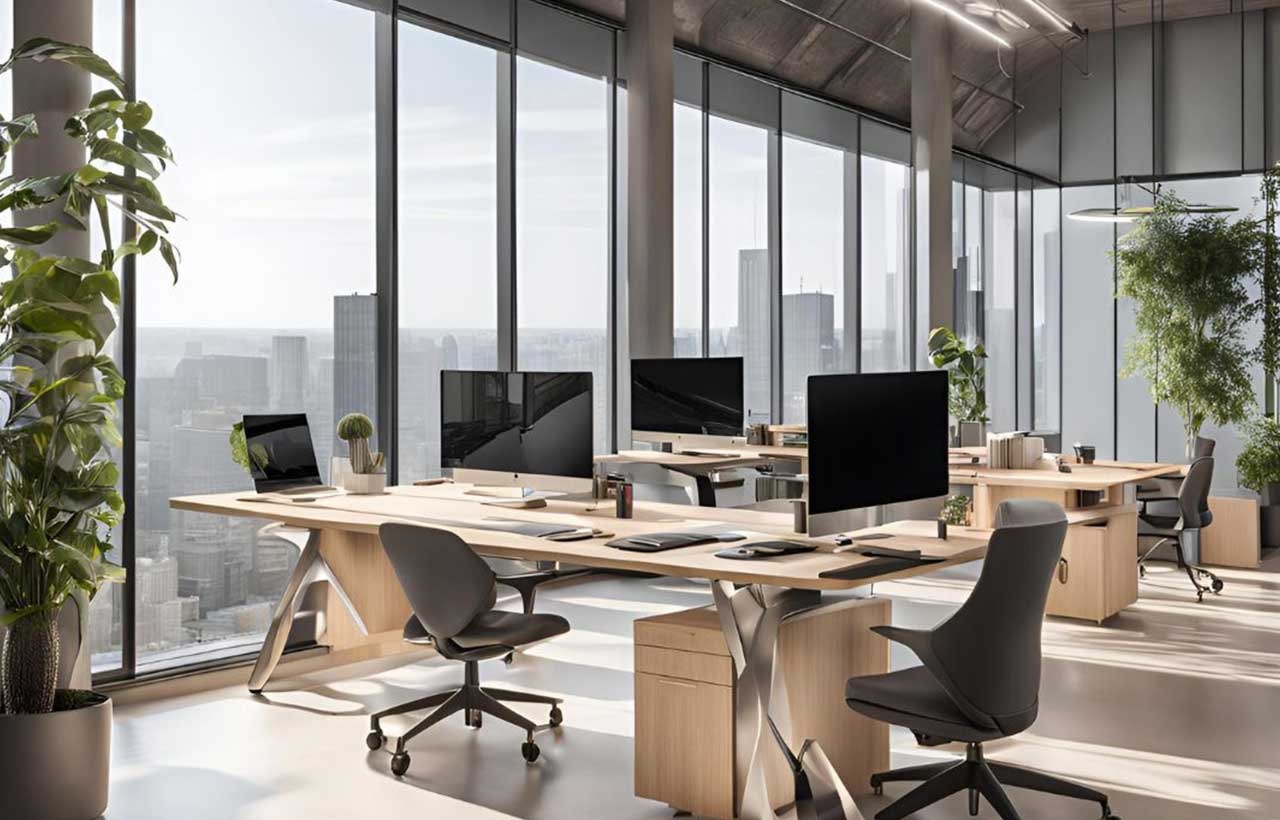 Natural elements shape the built form, and combining it with interiors and technology can benefit the users and their preferences. Let's delve into a few Cutting-Edge Design Elements
Natural elements shape the built form, and combining it with interiors and technology can benefit the users and their preferences. Let's delve into a few Cutting-Edge Design Elements
Biophilic Design and Natural Elements: In modern aesthetic interiors, the latest trend is to integrate natural elements to maintain the emotional well-being of the user. Blending inside and outside spaces with indoor alts, water elements, and courts fosters a healthy lifestyle
Modular and Flexible Furniture: The housing crisis leads one to adopt flexible furniture such as foldable desks, sofas, and Murphy beds, modular seating that optimises the room and saves space for extra storage.
Design Trends Shaping the Future
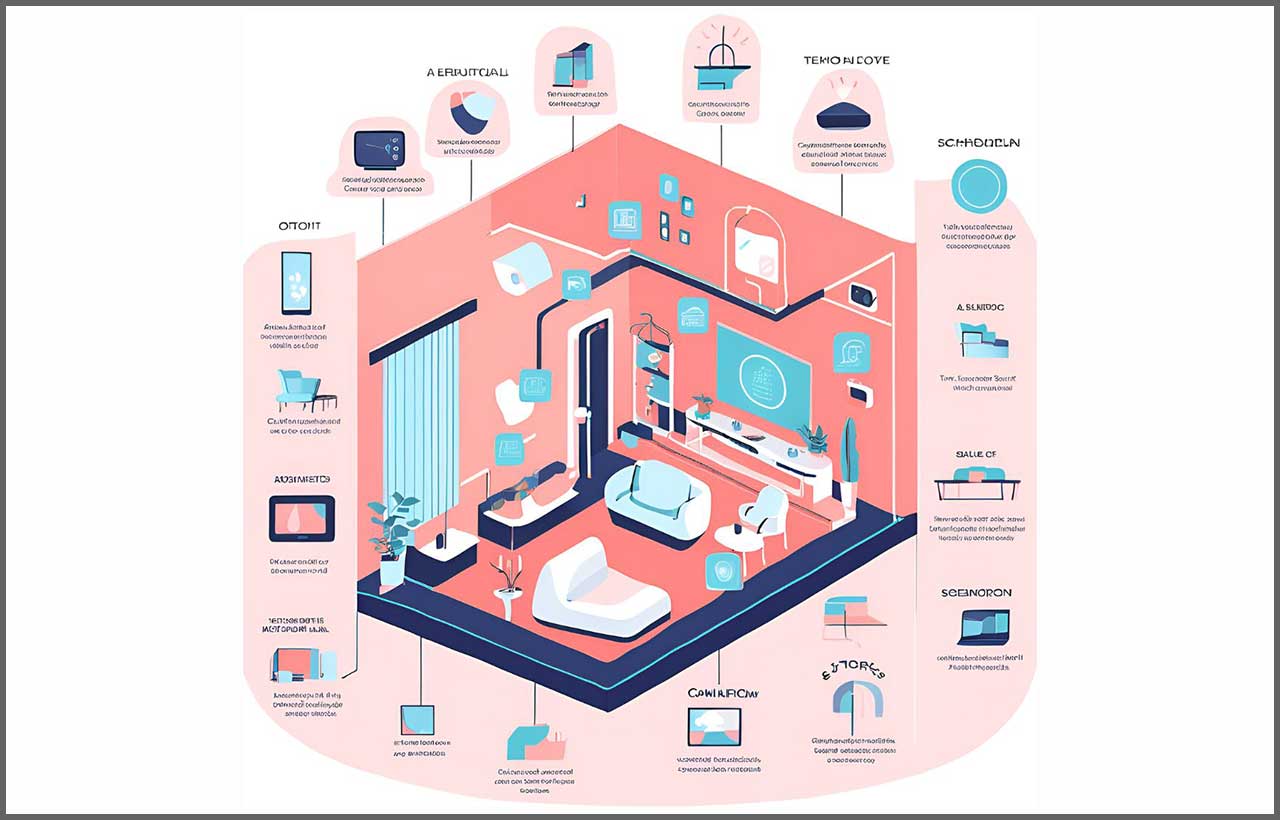 Numerous trends in 2024 shaped the design future and futuristic interiors are a way forward to adopt and learn from changes and evolve a sustainable Living.
Numerous trends in 2024 shaped the design future and futuristic interiors are a way forward to adopt and learn from changes and evolve a sustainable Living.
Open-Concept Living Spaces: To encourage fluidity in design, the open plans are perfect for contemporary luxury living lifestyles and designs that can be integrated with uncluttered movement and circulation spaces.
Multifunctional Rooms: To reflect modern needs, the rooms need to serve as a multipurpose space where the bedroom can be used as a study area or office for a guest.
Virtual and Augmented Reality in Design: Allowing clients and designers to visualize the built form before construction, AR and VR technologies are revolutionizing the design process.
Case Studies and Real-World Examples
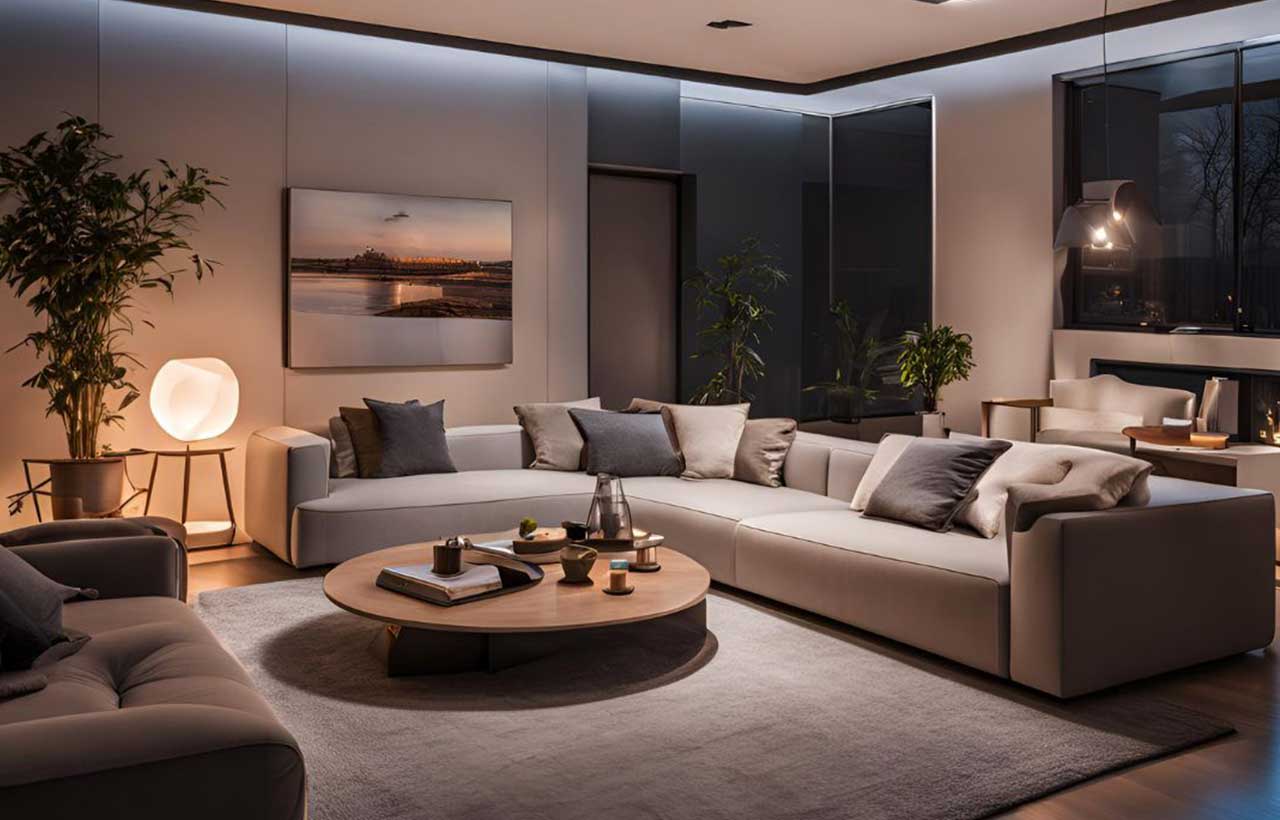 The future is evolving rapidly with smart home systems, eco-friendly techniques and tech-integrated features for self-sustaining societies.
The future is evolving rapidly with smart home systems, eco-friendly techniques and tech-integrated features for self-sustaining societies.
Futuristic Homes Around the World: Dubai is a sustainable city and with its innovative approaches showcases how design and technology can be integrated to create self-sustaining communities.
Tech-Integrated Apartments: Smart intelligent buildings with smart technology, smart lights and touchless tech with app-controlled systems are becoming the latest trend in the designing of smart living spaces.
Sustainable Smart Homes: Zero energy houses highlight the features of sustainable smart Buildings combining smart living technology with eco-friendly practices.
Benefits of Futuristic Interior Design
Check this list of Benefits of Futuristic Interior Design that can impact the built form and users
Enhanced Convenience and Comfort: Futuristic interiors should focus on creations that can incorporate smart living features without compromising practicality. Voice controls and automatic lights based on needs and moods enhance daily life. It helps to assist in our daily tasks such as scheduling, listing or setting reminders.
Energy Efficiency and Sustainability: Eco-friendly materials blended with energy-efficient systems can help to reduce energy consumption. Devices like solar-powered appliances, LED or biodegradable materials, and recycled wood make the futuristic interiors technologically advanced and environmentally responsible.
Improved Health and Well-Being: Incorporating biophilic design principles with technological monitors, one can facilitate health monitoring keeping track of physical well-being, fostering a harmonious environment.
Challenges and Considerations
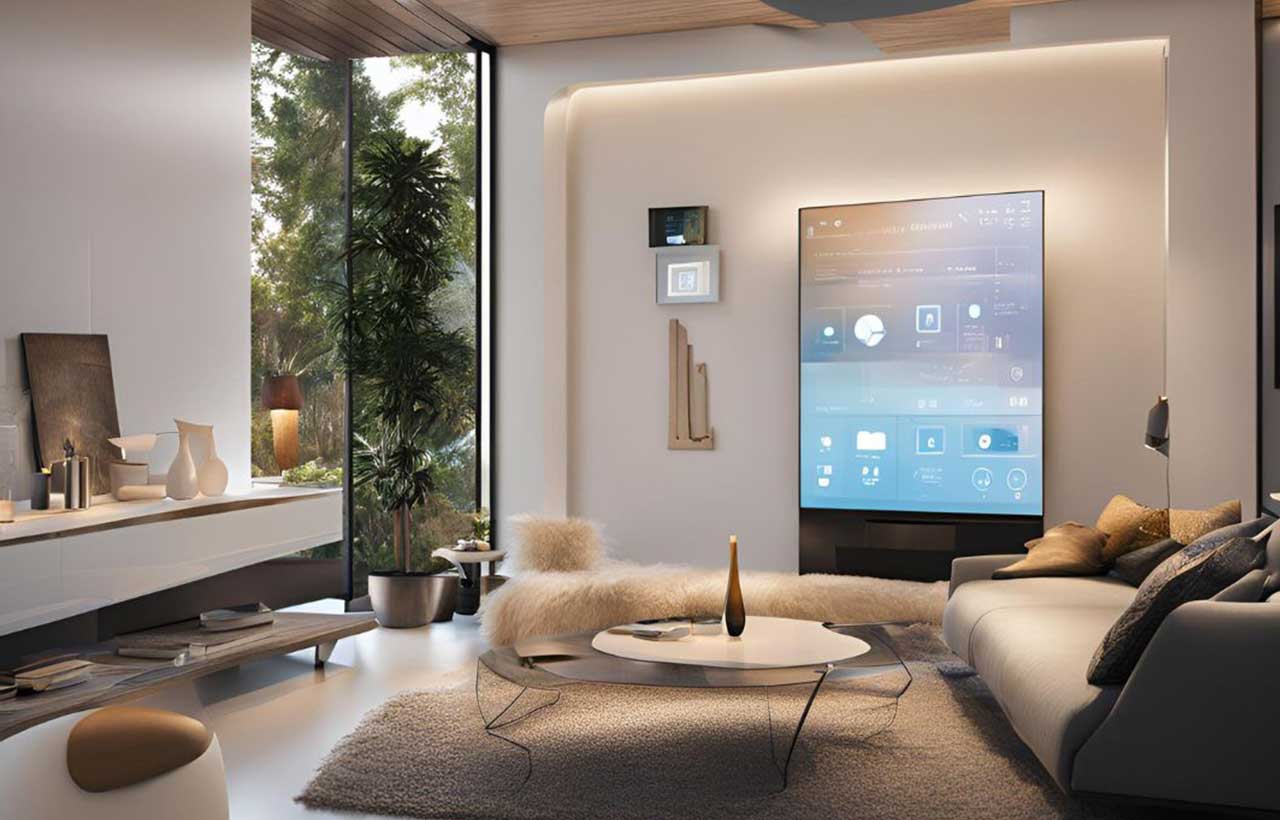 Challenges and preferences shape the futuristic interiors balancing them with aesthetics and functionality considering cost and technological changes.
Challenges and preferences shape the futuristic interiors balancing them with aesthetics and functionality considering cost and technological changes.
Balancing Aesthetics and Functionality: Designers need to understand the technological advancements but also the harmony and functionality of the spaces. Futuristic interiors require conscious spatial planning and innovative material use to avoid mechanical appearance design.
Cost and Accessibility of Technologies: There is a huge debate in the market about the affordability of the technologies for the average user. Artificial Intelligence (AI) -integrated systems, smart solar panels, and high end materials lead to recurring expenses.
Adapting to Rapid Technological Changes: Changes are evolving rapidly, transforming the way we anticipate, in terms of both time consumption and cost. The designers should understand the tech world and foresee the upgradable systems that help to create a cohesive environment.
Future Outlook of Interior Design
With emerging technology, collaboration with various stakeholders and innovative techniques the future is bright and promising for the interior designing realm.
Emerging Technologies and Innovations: The recent developments in robotic technology, 3D printing and eco-friendly use of materials have redefined the boundaries of futuristic interior ideas. Homes will become smart with individualistic expression with the integration of AI smart tech, acoustic or smart home systems.
Predictions for the Next Decade: The future of interior designing will be based on individualistic character and lifestyle focusing on customization. Modular furniture, the adaption of multipurpose space and the fusion of digital experiences will revolutionize home interaction.
The Role of Designers in Shaping the Future: The future is about collaboration and learning together. Designers ensure innovations and brands support technology that will influence users to integrate smart homes with nature, tech and sustainability.
Conclusion
Futuristic interior design influences the designer’s choice in adopting synergy of technology, sustainable approaches and innovative aesthetics. As we create smart living spaces, it is the role of the designer to create spaces that resonate with the users and improve physical and mental well-being. The evolution of futuristic interiors fosters interactive living by adopting technological-driven systems and principles to create each home heaven of innovation and dynamics.
Frequently Asked Questions (FAQs)
What are the key principles of futuristic interior design?
Understanding the technology-driven realm of design, smart materials and techniques that foster the well-being of the users.
How do smart home technologies enhance interior design?
The integration of smart features like sensors, digital locks, home automation, and changing lights as per moods and climate enhances the interior design.
What are the benefits of incorporating futuristic interior design in homes?
We live in a modern era, and busy lives and incorporating futuristic interior design in homes can help us save space, time and enrich our lifestyle.


